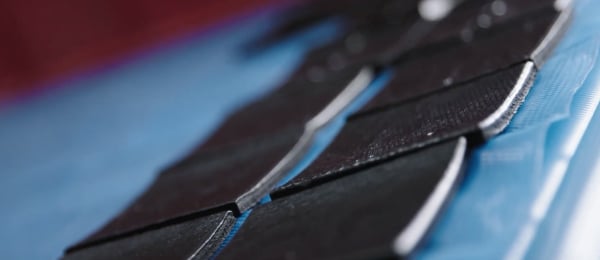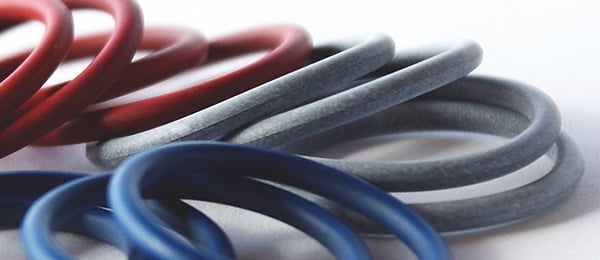
Materials
Whatever type of material characteristics you need: we will find the best appropriate material compound for your application needs – functional reliably up to the limits.
The materials are divided through the following aspects: their composition, properties and resulting application range in elastomeric materials, PTFE-based materials, materials with and without elastic properties i.e. TPU.
Elastomer Materials
Elastomers are chemical cross-linked, permanently elastic materials that feature a viscoelastic behavior. These come in a numerous of variants as sealing materials:
- (NBR) Acrylonitrile Butadiene Rubber
- (HNBR) Hydrogenated Nitrile Butadiene Rubber
- (EPDM) Eythylene Propylene Diene Rubber
- (FKM) Fluoro Rubber
- (FFKM) Perfluoro Rubber
- (ACM) Acrylic Rubber
- (AEM) Ethylene Acrylic Rubber
- (VMQ) Vinyl Methyl Rubber (Silicone)
- (FVMQ) Fluoro Vinyl Methyl Rubber (Fluorosilicon)
- (CR) Chloroprene Rubber
- (SBR) Styrene Butadiene Rubber
The specified hardness designation in the material compound data sheets will be given in Shore A. Whereas on finished parts, the hardness is usually determined in IRHD-m.
Thermoplastic Elastomers
Thermoplastic elastomers are referred to as materials that can be processed like a thermoplast, but have elastomeric properties.
PTFE Based Materials
PTFE - Polytetrafluorethylene is a sintered material with very high chemical and thermal resistance, but without any elastomeric properties. Sealants made of PTFE are commonly machined out of extruded semi-finished products.

